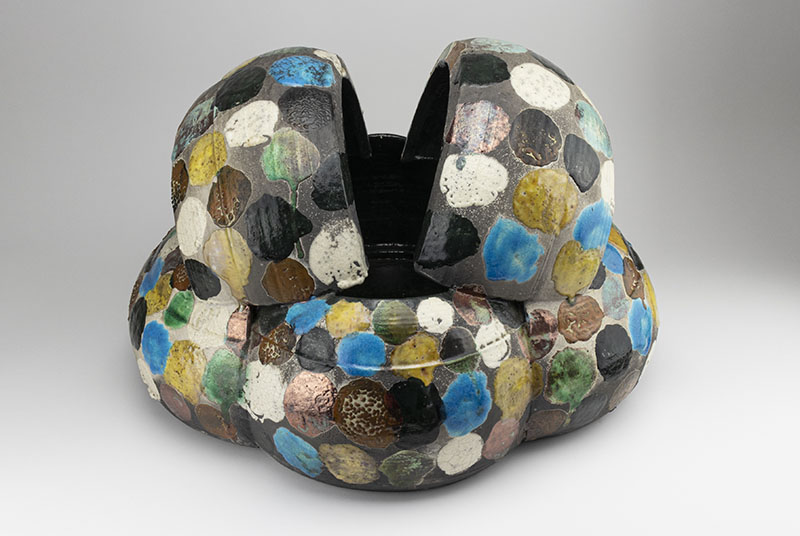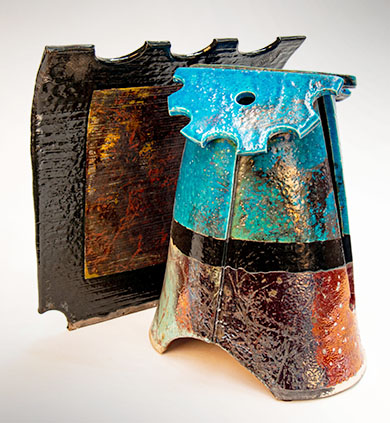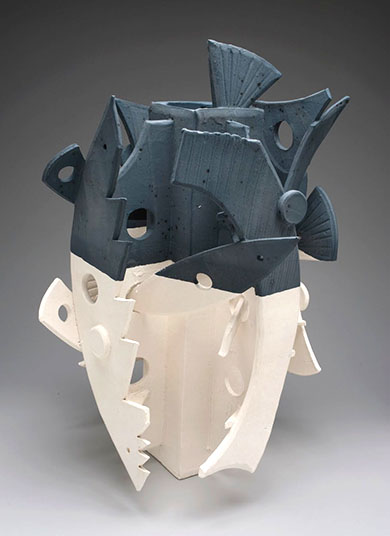Onward through the fog!

I've always defined myself by the work I have done. Work has been my salvation in this world into which I have fallen. Busboy, salad chef, short order cook, scallop shucker, sailing instructor, bartender, carpenter, cab driver, banker, advertising account executive, oil field roustabout, mudlogger, sculptor, ceramic artist, and college professor in Texas and the state of Chihuahua, Mexico, for the past forty-one years.
I suppose the other, more important accomplishment is having been the single parent of two glorious children, Catherine and Walker, grandparent of six, and great grandparent of two. Added to that, my twenty-nine year marriage to the incomparable Elizabeth Yoshiko Akamatsu, sculptor and partner extraordinaire.
The key to my happiness is that I adore what I do, and am engaged in a passionate anti-entropic imperative—a quest that creates order in the face of chaos, a life's work that gives joy to the people I touch.
"I work toward what I feel, toward a kind of ecstasy." That Matisse quote defines my approach to making art. In my work the hand is the cutting edge of the mind.
One's brain has two halves, the limbic system and the neocortex, the horse and the rider. The horse is what has saved me, and guided my passage through the treacherous waters of life on the planet.
I played varsity football and lacrosse in high school and college, but my crowning glory was that I was an undefeated boxer. I won the Golden Gloves award at Yale. My coach, who had fought on the cards with Jack Sharkey (famous heavyweight champion back in the twenties) told me that I could have gone pro. I mention this because of my need to engage in what I call a "body dance" to be happy, celebrating the joy of my brawn being more of a driver than my brain.
After finishing my undergraduate studies I lived in New Orleans, first working at the banking job, and then the advertising account executive gig. Too often I felt like a mental prostitute, forced to engage in actions that were unethical, such as selling a cigarette brand to minors, and land which was bound to flood in case of a direct hit by a hurricane (Katrina did just that years later, wiping out that section of the city).
All I did was follow orders. I was suffering from a profound emptiness and frustration. There was no beauty in my life. I quit, drove a Yellow Cab, and became a carpenter. I attended night school at Tulane to explore what profession would be best for me. Then, just on a whim, I took a course in ceramics. It hit me like a lightning bolt. I had found my bliss. The possibility of the gesture, the element of performance, the body dance, the sensuous power of "touch" finally freed me from my rut of having no freedom, just orders to follow.
I began as a functional potter, and soon thereafter moved into a more personal strategy, spinning off a powerful attraction to utilitarian inventions made of materials other than clay. Instead of pottery, my work became a show of power or beauty, vessels that one would rather look at than use.
My father, Renzo Fenci, immigrated through Ellis Island in 1937. He was then hired by the Works Progress Administration to make public art. He met my mother in New York, and they married. Then in quick succession he ran the sculpture area at the University of Wisconsin, at Washington State in Pullman, and at the University of California at Santa Barbara, where I was born, finally establishing a long career at the Otis Art Institute in Los Angeles.

Renzo's art spun off the history of the Renaissance in Florence. His work focused on celebrating the beauty of the female figure. I didn't want to compete with him in the same ball park, so I forged a path in my own direction.
My father was saddled with the power of the history of Italian art. He celebrated that all encompassing tradition. He eschewed anything that smacked of a contemporary direction—he referred to Giacometti as, in his strong accent, "Speet on a toothpick."
The beauty of being an artist in the United States is that there is no powerful shared artistic tradition. Every one of us, save for Native Americans, came from somewhere else. This is a double-edged sword, but it does give us permission to invent ourselves as whatever we choose to be.
I do believe, or I should say I hope, that I have inherited from my father the concept of a form that is bursting with fullness and life force. His work celebrated that, and I pray that I have inherited at least a little bit of that oomph.
Intimate scale, the history of use, the tactile qualities of touching and lifting, and, above all, the interaction of surface and form are central concerns of my work.
Because of my research in various parts of the globe, I have developed a deep attachment to many types of functional objects, such as Pre-Columbian Architecture (I majored in Latin-American Studies in college), Japanese Armor of the Muromachi period and traditional origami (my wife, Lizzie, was born in Japan), Shaker hatboxes and tinware (there was a Shaker village within a stone's throw of where I went to grad school), Etruscan ceramic art (I'm Italian), and sailboats (I am a competitive sailor).
I take these archetypes that draw me like a magnet, filter them through my psyche, and intuitively collect them. My work, therefore, constitutes the fusion of loosely rendered reinventions of the past; they are my attempt to build a family tree of spiritual ancestors, a heritage of my own passions.
And I'm not done yet. Lots of irons in the fire. As the old timers I worked with, banging nails on Nantucket Island as a young man, used to say, "Onward through the fog!"

Piero Fenci was born Santa Barbara, California, and graduated with a BA from Yale in 1966. After graduate studies at Tulane in art history and studio art, he completed his MFA at the New York College of Ceramics at Alfred University. Since 1975, he has been a professor of Art at Stephen F. Austin State University.



